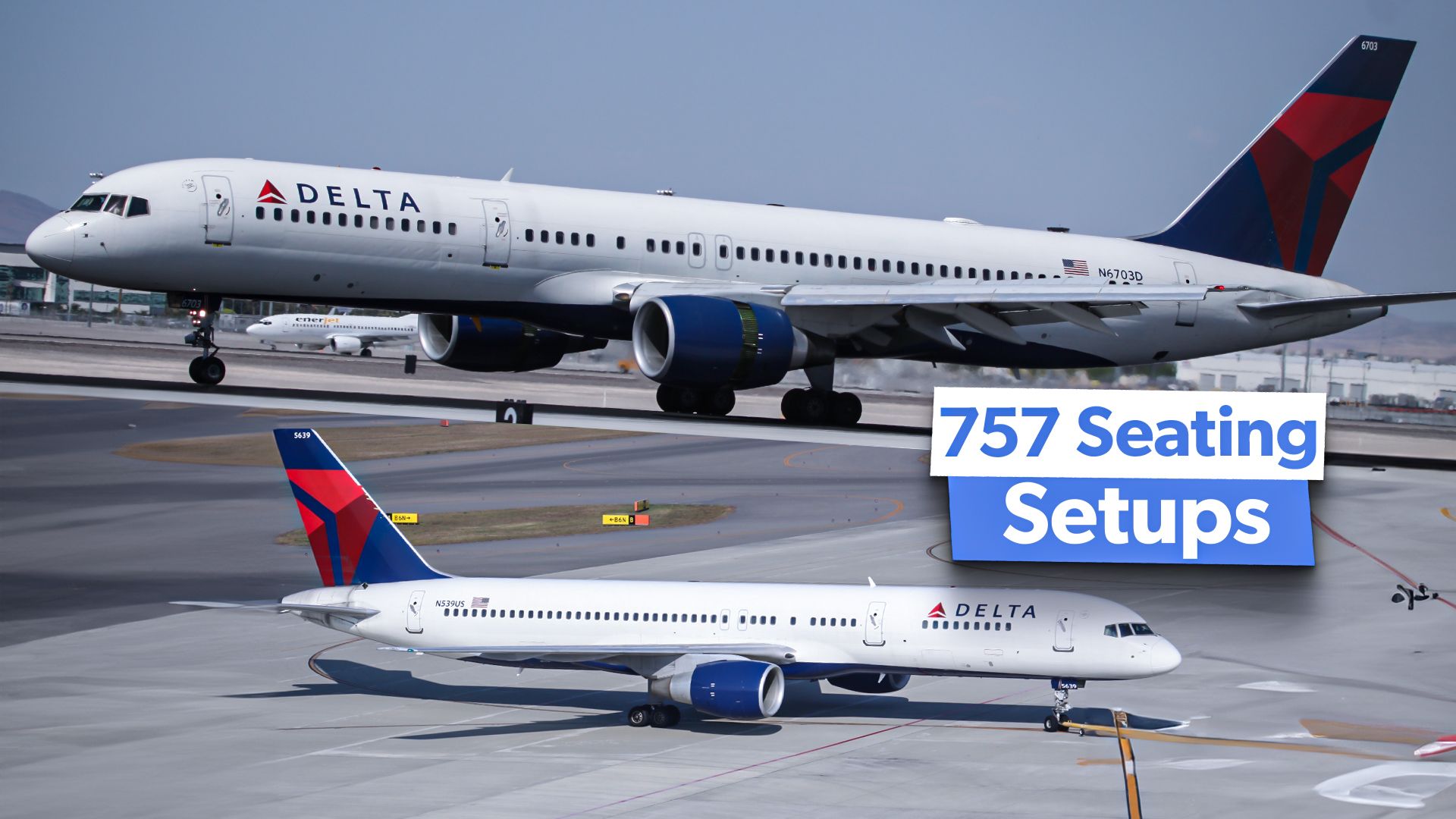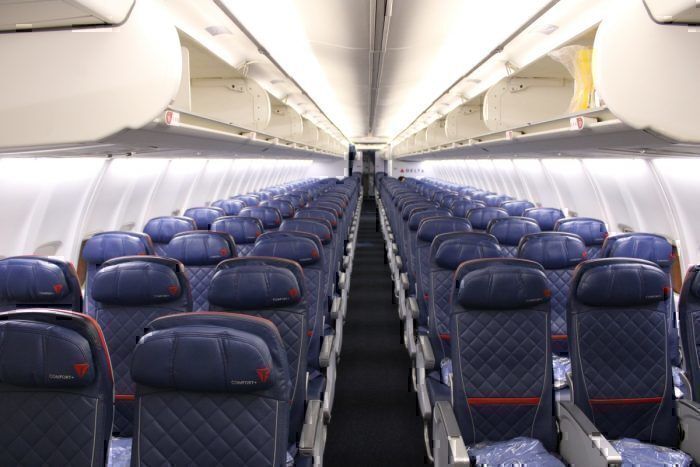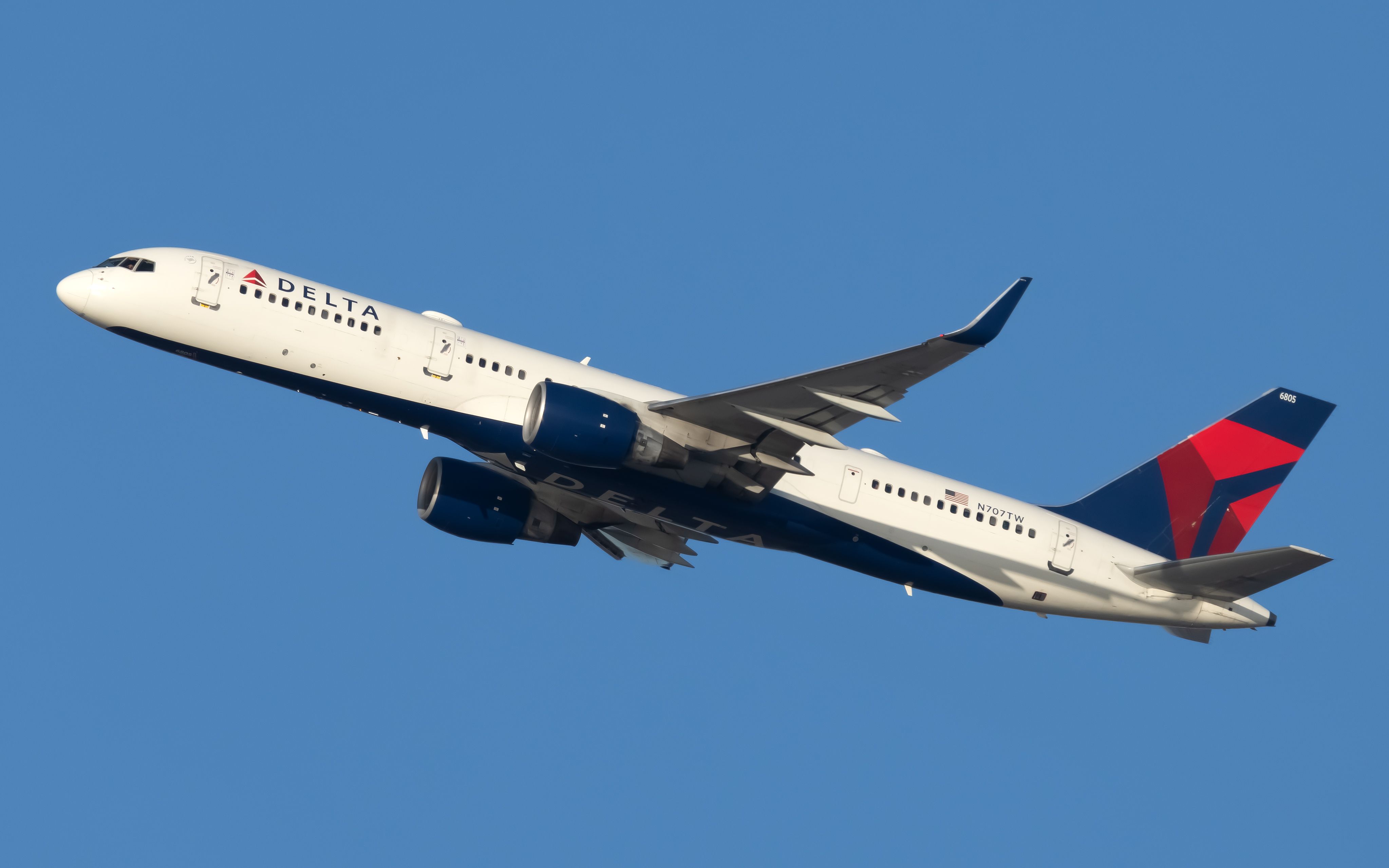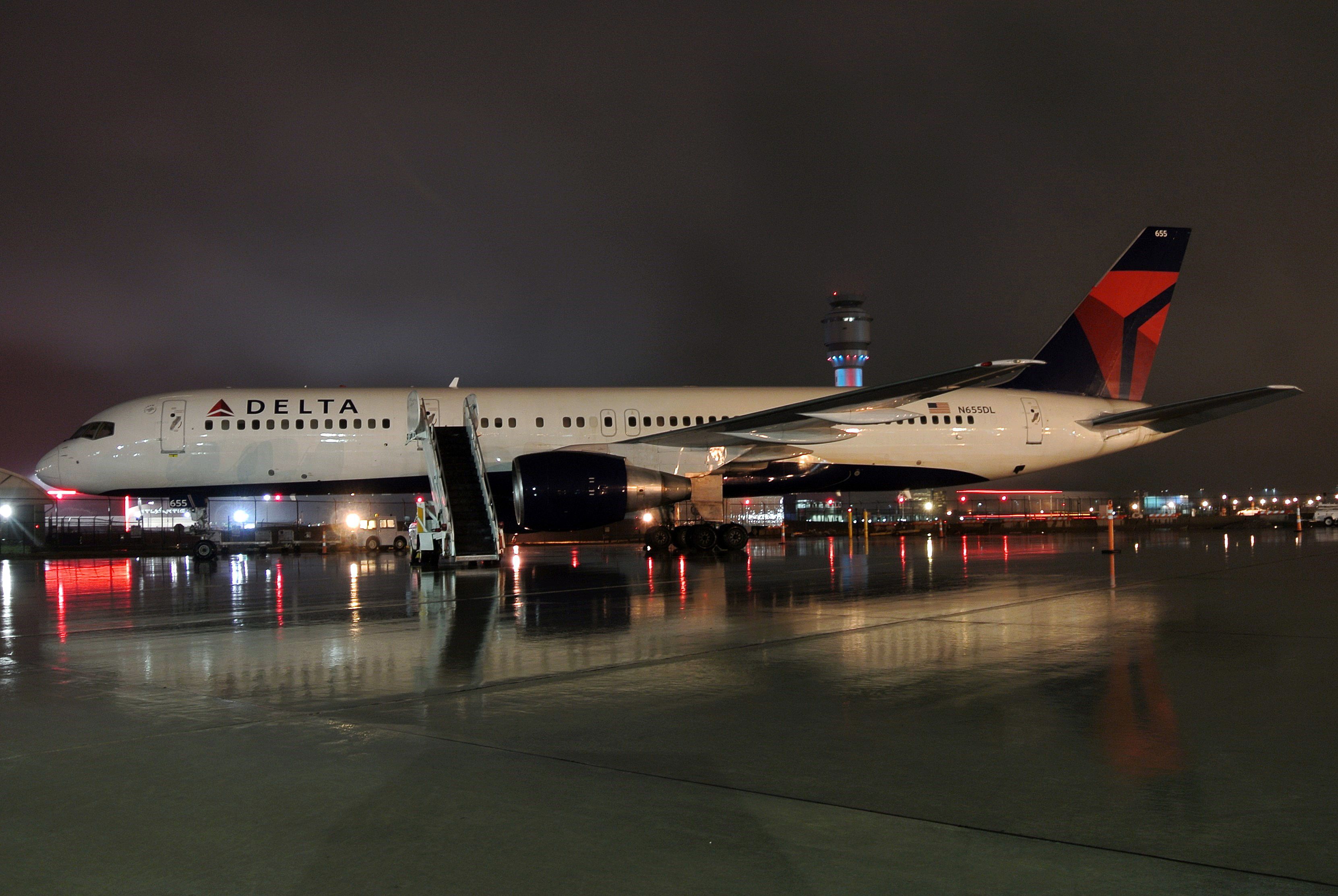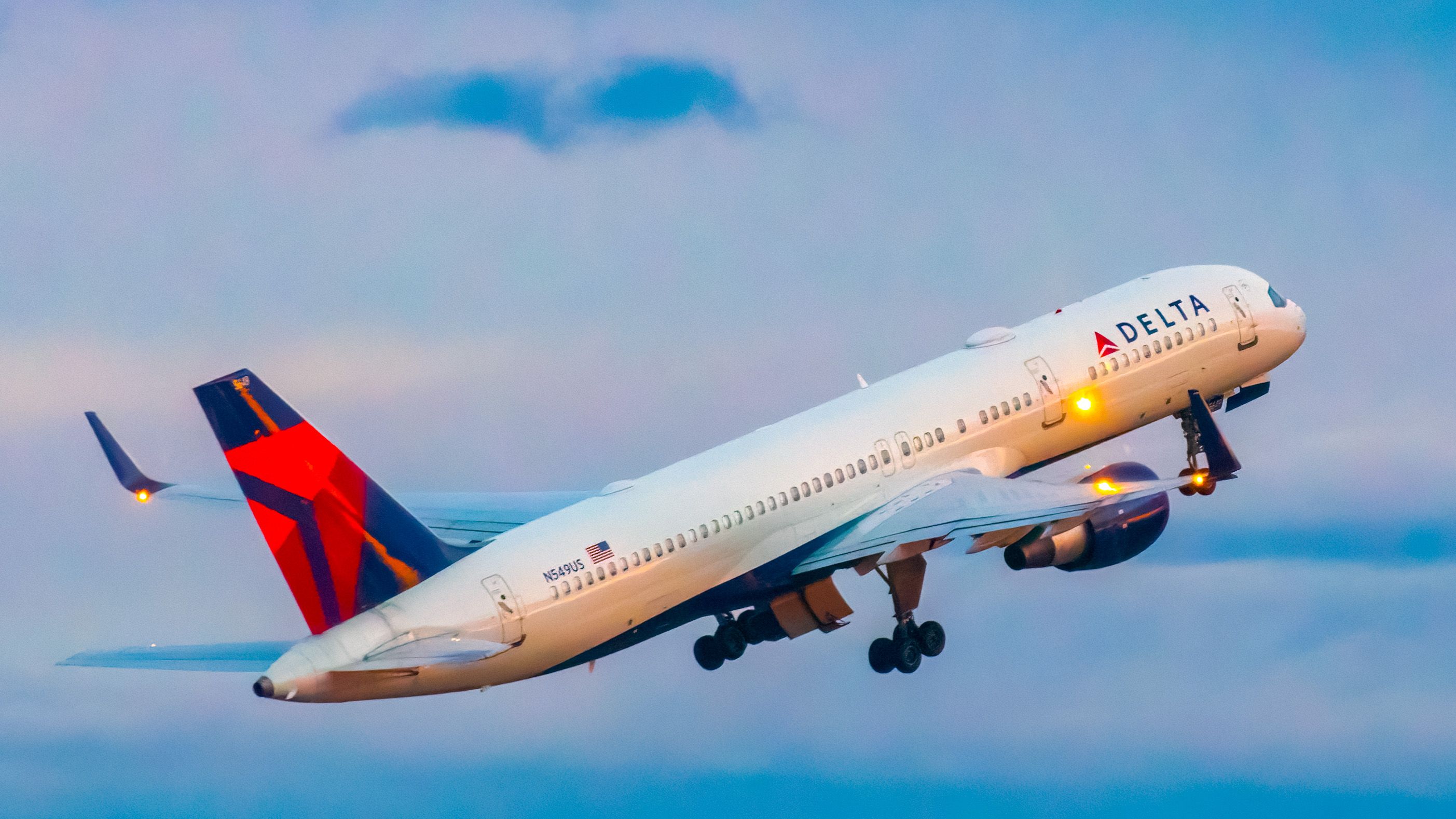Summary
- Delta Air Lines operates the world’s largest Boeing 757 fleet, with 111 757-200s and 16 757-300s.
- The 757 is versatile and used for short-to-intercontinental flights, with Delta offering multiple seating configurations.
- Delta’s 757-200 models include 75D, 75G, 75H, 75S, and 75C, each with different seating arrangements.
Delta Air Lines’ first Boeing 757 service began on December 1, 1984. The narrowbody, twin-engine aircraft offered new technology and 45% better fuel efficiency than the Boeing 727, which Delta was replacing.
Despite Boeing ending production of the aircraft in 2004 to focus on further development of the 787 and 737, Delta Air Lines continues to operate their 757s heavily. According to the Delta Flight Museum, Delta Air Lines has operated the world’s largest Boeing 757 fleet since July 2007.
The airline currently has 111 757-200s and 16 757-300s in its fleet, per ch-aviation. In comparison, United Airlines has the next largest fleet, with 61 total 757s. The 757 fleet is Delta’s second-largest Boeing fleet (after the 737-900ER) and third-largest overall (after the Airbus A321-200).
Although the 757 was originally designed for short-to-medium flights, Delta takes advantage of the aircraft’s versatility by operating its 757s on transcontinental, intercontinental, and transatlantic flights. As the 757 serves many purposes in Delta’s fleet, the airline uses multiple seating configurations to provide the most comfortable, efficient air travel possible.
757-200 Seating configurations
Delta’s 757-200s come in five models. Each model varies in seat configuration or number, allowing Delta to cater to each route’s specific needs. While all models (except charter aircraft) include Delta’s premium economy (Comfort+) and main cabin seating, business and first-class seating vary.
Photo: Jay Singh | Simple Flying
Model 75D
Delta’s most common 757-200 model is 75D, with 39 aircraft. This model seats 199 passengers in two classes, plus premium economy:
- First class: 20 seats
- Economy: 179 seats (29 Comfort+)
Delta’s premium economy seats, Comfort+, are located from rows 15 to 20 in this configuration. All aircraft of this model offer WiFi and individual seat-back inflight entertainment systems.
Model 75G
Like the 75D, the 75G model of the 757-200 has its seats configured in a two-class arrangement, with Comfort+seats from rows 15 to 22. This model only seats 193 passengers.
- First class: 20 seats
- Main Cabin: 173 seats (41 Comfort+)
Only five of Delta’s 757-200s are model 75G. All five aircraft are equipped with inflight WiFi.
Model 75H
Delta’s third 757-200 model, 75H, is configured like the 75D model but has ETOPS (Extended-range Twin-engine Operations Performance Standards). This enables the twin-engine aircraft to fly up to 4,520 miles, or approximately nine hours and 15 minutes of flight time.
Delta operates 12 aircraft of this model. Like the 75D, this configuration seats 199 passengers in a two-class arrangement:
- First class: 20 seats
- Main Cabin: 179 seats (29 Comfort+)
The Comfort+ seats are located in rows 15 to 20. Like the 75D model, the 75H has WiFi and individual seat-back entertainment systems.
Photo: Vincenzo Pace | Simple Flying
Model 75S
Fifteen of Delta’s 757-200s are fitted in the 75S model. This version seats 168 passengers in a two-class arrangement. However, unlike the previous models containing first class seating, the 75S includes Delta One, Delta’s enhanced business class seating.
- Delta One: 16 seats
- Main Cabin: 152 seats (44 Comfort+)
The Comfort+ seats are in rows 18-25. All seats have access to inflight WiFi and individual seatback entertainment systems. Delta One passengers on these aircraft enjoy flat-bed seats and additional amenities while flying.
Did you know the 757’s cockpit is lower than the main cabin, requiring pilots to step down to enter the flight deck?
Model 75C
Delta’s final 757-200 model is the 75C. This version of the 757 is used for charter flights, such as those operated by Delta for the National Basketball Association (NBA).
According to the NBA website, the Women’s National Basketball Association (WNBA) recently announced a league-wide charter program for the 2024 season. Delta will be the principal carrier for the teams and officials.
Due to their specific purpose, the 757s configured in this style feature a single business class of around 72 seats or a two-class seating arrangement containing first and business classes. The seats are typically arranged in a 2-2 configuration throughout the entire aircraft rather than the usual 3-3 configuration used in the main cabin.
This seating style guarantees the teams get their money’s worth for the charter and ensures the basketball players have enough room to fly comfortably. With the average NBA player’s height over six and a half feet, the extra legroom is much needed for passengers on these charter flights.
When talking with a Delta 757/767 Captain who has regularly flown NBA charters, I got an insider’s look at what some of these prestigious flights are really like. According to this pilot, operating a charter flight differs greatly from his usual routes. Some of the most interesting details he provided were:
- There are typically no overhead bins in first class.
- The lavatory is larger and, like the Airbus A220, contains a window (or two).
- On aircraft with two-class seating, the coaches and staff tend to sit in the back, while the highest-paid athletes are seated in first class.
- Some first-class seats are arranged in groups of four (two forward-facing and two rear-facing) surrounding a common table.
- Despite the 757 being a narrowbody aircraft, the 75C model seems very spacious due to the decreased number of seats and spread-out configuration.

Related
Top 5: A Look At Delta Air Lines’ Top Routes With The Boeing 757-300
These are some of the most popular domestic routes in the United States.
757-300 Seating configurations
Delta acquired all 16 of its 757-300s after its 2008 merger with Northwest. This aircraft is simply a stretched version of the 757-200. The extra length enables the 757-300 to carry 20% more passengers and increases its cargo volume by nearly 50%.
Like the 757-200, this Boeing is also configured in a two-class seating arrangement. The aircraft can carry 234 passengers.
- First class: 24 seats
- Main Cabin: 210 seats (32 Comfort+)
Photo: Joe Kunzler | Simple Flying
Still flying high
Boeing ended production of the 757 in 2003, partly due to the development of the 787 and also to focus on increasing the capabilities of the 737. While now one of the oldest airliners in operation, the 757’s versatility and efficiency lend to its continued relevance and prestige, even as newer aircraft take to the skies.
Like the 727, which it replaced in Delta’s fleet, the 757’s powerful engines and compact design allow takeoffs from shorter runways. Additionally, the aircraft’s glass cockpit design, a first for Boeing’s narrowbody aircraft, is still as modern as the cockpits in some newer aircraft.
The 757’s supercritical wing design has also contributed to its lasting success by enhancing fuel efficiency and reducing production costs. Further, Boeing’s extensive use of improved alloys and composite materials for the aircraft reduced empty weight and increased efficiency.
Despite its inevitable retirement and replacement in the future, the 757 remains an integral part of Delta’s narrowbody fleet and an icon in commercial aviation. The versatile, efficient aircraft will remain in the skies for now, continuing to fascinate enthusiasts with its tenacity and resilience while charming passengers with a comfortable, smooth travel experience.
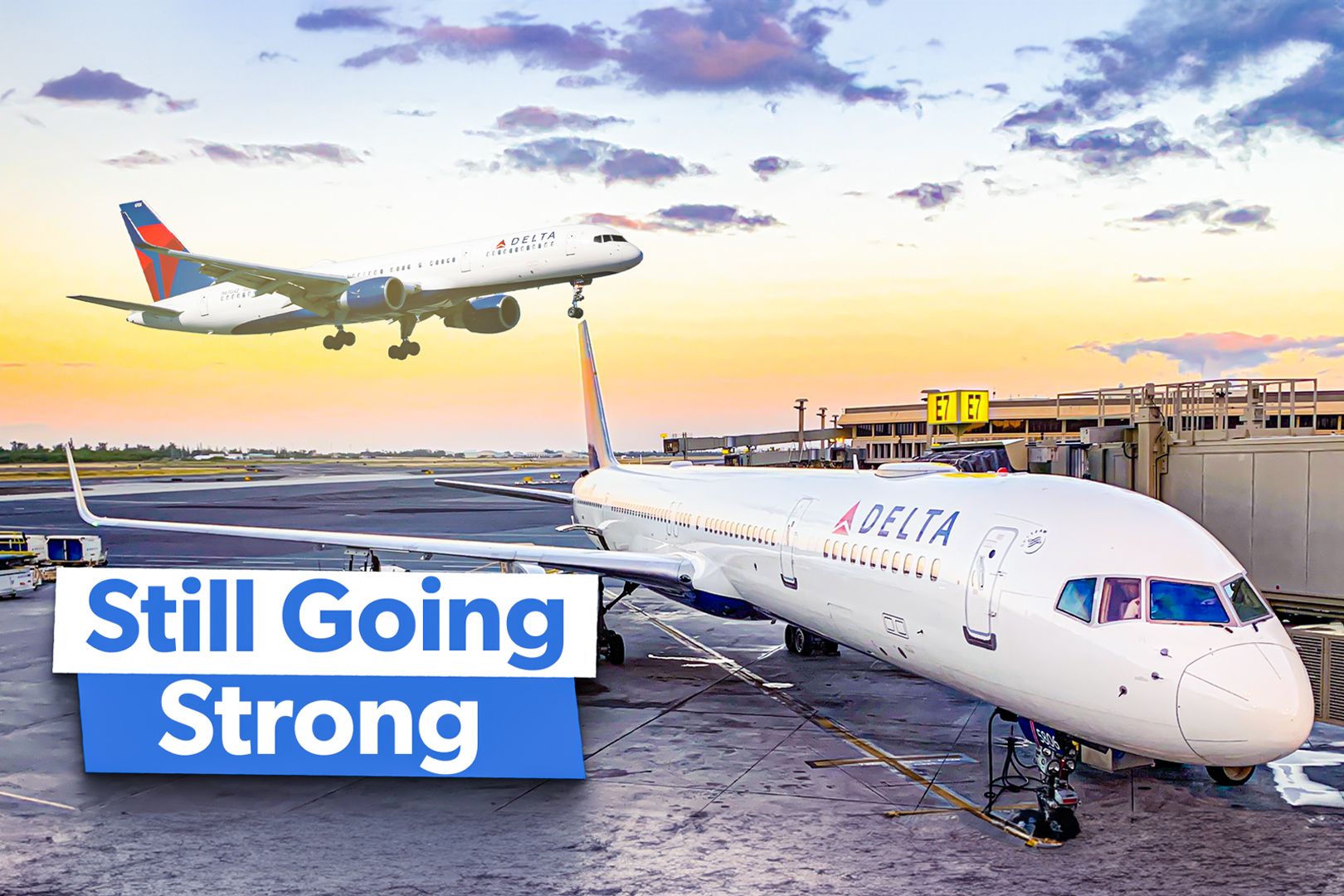
Related
Recently Refurbished: How Long Will Delta Air Lines Keep Flying The Boeing 757 For?
With interior overhauls underway, it is likely the carrier will continue to operate the aircraft type for as long as it is able to.

